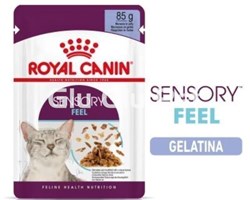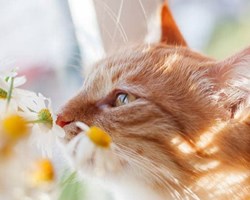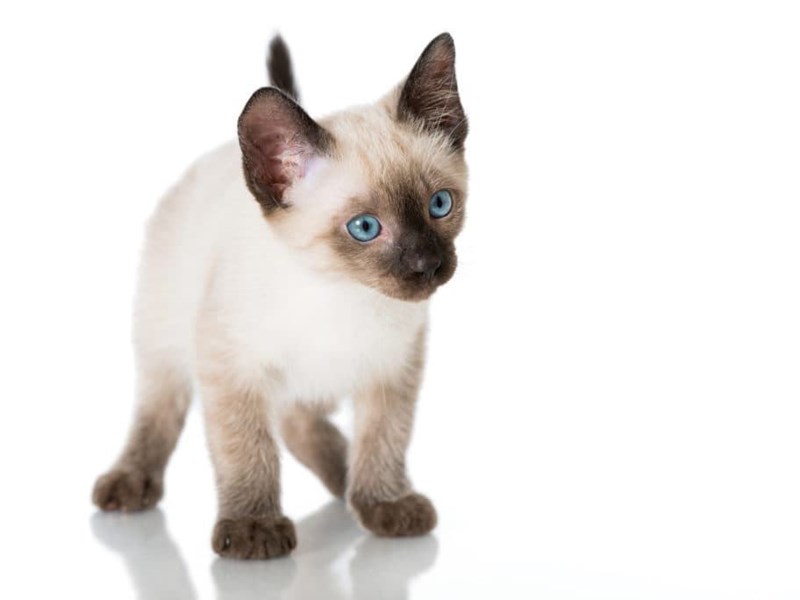
WHERE DOES THE SIAMESE CAT COME FROM?
This cat is the legendary one from the temple of the king of Siam.
Cats were not only appreciated by the king for their exquisite beauty, but they were also used as guard cats.
The Siamese perched on the tall columns surrounding the king's throne if someone threatened the king, the cats would jump from the columns to the assailant.
The size of the Siamese, their strength and their ability to jump from a great height, were enough to knock him down.
They scratched the face of the person who wanted to harm the King of Siam.
This crystal-eyed domestic feline hails from the ancient kingdom of Siam, in what is now Thailand.
In its origins it was very loved by the Thai royal family, not in vain they were the only people authorized to have this pussycat as a pet.
The Siamese cat was considered pure and sacred, it was believed that the animal received the spirit of certain people when they died and the specimens walked freely through the palace rooms.
The first Siamese cats to arrive in Europe were a gift from the King of Siam to the English Consulate General in Bangkok at the end of the 19th century.
These early Siamese cats were named Pho and Mia.
They were a breeding pair that Owen Gould introduced to England in 1884.
Mr. Gould's sister showed Pho and Mia's kittens at the London exhibition held at the Crystal Palace in 1885.
In America, the first Siamese cat was also a gift from the King of Siam to a friend.
In the late 1890s and early 1890s, Siamese cats were imported into North America from the United Kingdom, France, Japan, and Siam.
Siamese remained somewhat uncommon until after World War II, when they soon became the most widely registered cat breed.
The Siamese cat is, along with the Persian, one of the oldest and best-known cat breeds.
Its origin is in Southeast Asia, specifically in Siam, which today belongs to Thailand.
There, the Siamese was revered as a temple cat.
Towards the end of the 19th century, the first specimens arrived in England, where the breeding of this breed began.
In 1892, the first standard for Siamese cats was established, but the breed was only recognized in 1949 by the International Feline Federation (FIFe).
THE APPEARANCE OF SIAMESE CATS.
Siamese cats are medium-sized, with a slender body, long legs, and small, oval paws.
When they reach adulthood, females weigh between 3 and 4 kg and males between 4 and 5 kg.
Its triangular head is elongated by upright, pointed ears with a wide base.
The almond-shaped eyes of intense blue color and slightly oblique are typical of this breed.
The tail is very long and narrow at the base, although it tapers even more towards the tip.
The body of the Siamese cat is darker in the areas where the body temperature is lower, in the legs, tail, face and ears.
This characteristic is due to a thermal gene that causes the pigments to settle in colder spots.
The rest of its anatomy has a light coloration.
When they are born, the kittens are totally white due to the high temperature of the mother's body.
Siamese twins are part albino, meaning they produce little of the pigment melanin.
It is thanks to this that they acquire their color variation, the seal-point.
This pattern is responsible for a genetic black coloration in the limbs, which turns dark brown due to the "cs" gene of the Siamese.
The coloration of the dark areas does not happen immediately, but only a few weeks after birth.
The rest of the hair is white or cream tones.
This breed has a very short, fine, shiny, silky coat that lies close to the body and, in addition, it hardly has a lower mantle.
Returning to more earthly areas, within the Siamese cat there are two varieties: the traditional or Thai and the modern.
The first has rounded features and is smaller than the modern one, with a slimmer body and sharp face.
As soon as you observe members of each of the categories you will distinguish them perfectly.
As a curious feature, we tell you that the areas of his body that are dark; ears, face, legs and tail, have a lower temperature than the white ones.
This condition is due to a thermal gene that causes pigments to settle in the coldest areas of their anatomy.
When it is born, the Siamese cat is totally white since it has been staying warm inside the mother's body.
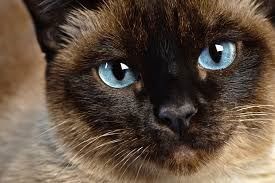
BEHAVIOR OF THE SIAMESE CAT.
This breed is very attached and allows itself to be trained by humans up to a certain level.
These cats only learn as much as they want, and they won't hesitate to pull out their claws at anyone who tries to teach them something with violence.
Affectionate with all members of the family and sociable with people, the Siamese cat seeks the company of its owners, enjoys playing with them and, although we do not understand it, emits a wide variety of meows to communicate with us.
If you ignore him, he will become depressed.
He hates loneliness and can't stand indifference.
His intelligence and kind character make him the perfect cat for a family.
Siamese are very sociable kittens with a high need for participation.
In addition, they communicate a lot and have a strong voice.
If something is not right with them, they will say it out loud, which is why they are considered especially assertive.
Siamese cats love to be in the company of people and greatly appreciate the pampering of their owners.
Left alone for too long, boredom will soon set in for these cunning cats.
In case your cat cannot leave the house, you should offer him enough options to entertain himself, such as intelligence toys.
The Siamese are very affable and can live as a couple without problems.
They are able to entertain each other for hours and groom each other's fur.
They are also suitable cats to take for a walk on a leash, as long as they have been accustomed to this accessory as children and have practiced it a few times at home before the first outing.
The Siamese cat is quite active, it likes to play and if it gets bored it can do some mischief at home.
He is also affectionate and sociable, a good companion for adults and children who will become depressed if you do not give him the attention he demands. By the way, it is a great meow that emits different types of sounds.
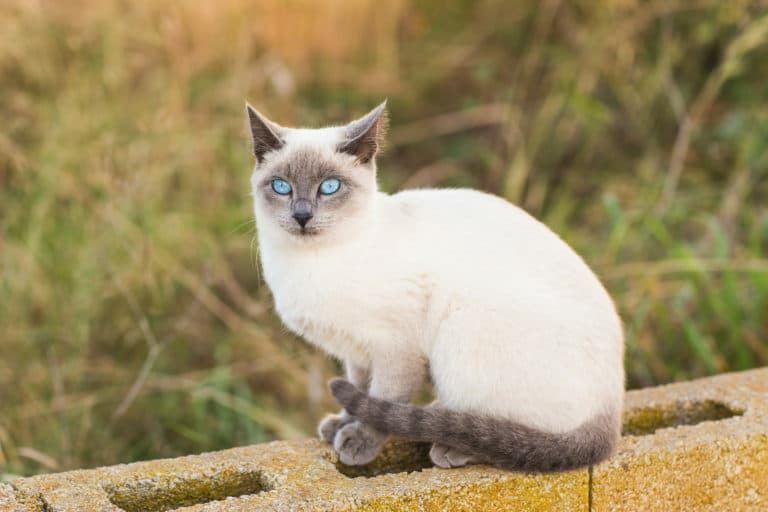
WITH PROPER CARE, SIAMESE CATS CAN LIVE AT LEAST 14 YEARS.
Thanks to their short coat, Siamese do not require complicated care.
It is enough to brush your hair from time to time to remove loose hairs.
Because their undercoat of hair is practically non-existent, cold and damp places are not their favorites.
Make sure the temperature in your house is not too low.
If your Siamese cat comes back wet from his walk outside, you need to dry him well.
These little felines love warmth, so it is very likely that they will look for a small hole in the radiator or in other warm places in the house.
Your Siamese will love having a thermal blanket at their disposal.
Avoid exposing it to drafts.
Siamese cats are very sociable and affectionate, so it makes sense for them to live with others of their kind.
Having two Siamese twins has the advantage that they enjoy cleaning each other, so our work with them is even less.
Since they also enjoy the company of people, they need enough time to play with them and pamper them.
So that your cat can let off steam properly, you have to place some scratching furniture around your house.
The need for a scratching post with several levels goes without saying, since kittens love high places.
You should let them out of the house so they can move and entertain themselves sufficiently.
You can secure your balcony with a cat net.
If you want your walks with your Siamese to be as pleasant as possible, you should get him used to the leash as soon as possible and practice at home before going out for the first time so that he doesn't get unpleasant surprises.
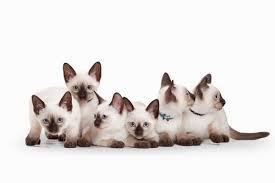
THE BEST FOOD FOR YOUR SIAMESE CAT.
With regard to the diet of the Siamese cat, it can be affirmed that it is not very demanding.
High-quality feed and wet food with a high meat content are ideal, you can find them in our Glu Glu Pet store.
There are also foods created especially for Siamese cats, such as the Royal Canin Siamese Adult feed. It is important that the prepared food that you offer your cat does not contain preservatives, flavor enhancers or other similar additives.
When it comes to the correct amount of food for Siamese cats, no standards can be set.
There are many factors that influence the feeding of these small felines, such as age and health status.
To take care of its hydration, it is important to always offer your Siamese cat enough fresh water.
Avoid giving milk from other animals because cats are lactose intolerant and, in some cases, it can cause serious digestive problems.
Cat milk has a special composition that is well tolerated by these felines, and is an ideal snack.
THE REPRODUCTION OF SIAMESE CATS.
Siamese cats reach sexual maturity between 4 and 6 months of age.
This domestic cat quickly reaches sexual maturity, is highly sexually active and can have very large litters.
Their heat is very intense and is characterized by strong meowing and marking.
As always, we recommend that you sterilize your pet to avoid unwanted offspring and the consequent risk of abandonment.
Gestation lasts between 63 and 69 days and most litters consist of 4 to 6 pups.
The kittens are born with light hair and after a couple of days the extremities are colored.
The Siamese cat is sexually very active, reaches sexual maturity very early and can have numerous litters.
The heat of this feline is very intense and is characterized by especially scandalous meows and markings.
After a week, the sweet pussycats open their eyes.
Kittens should stay with their mother until they are at least 12 weeks old.
This period is when the little ones learn to socialize and acquire other important knowledge from the mother.
It is also essential that there is a certain rest period between litters.

DISEASES OF SIAMESE CATS.
Siamese cats frequently suffer from hereditary diseases caused by breeding.
Among them, we find retinal atrophy which, in the worst cases, can cause blindness.
Additionally, there are cases of heart disease, metabolic disorders and cancer; tumors in the mammary glands.
It is also not uncommon for Siamese cats to suffer from esotropia, also known as convergent strabismus, and nystagmus.
Some specimens of this breed have knots in the tail produced by the alteration of the cartilage of the sternum.
Melanin deficiency is thought to be due to partial albinism in Siamese twins.
It is important to visit your trusted veterinarian to take the appropriate preventive measures.
Another anecdotal fact about this cat is that in its beginnings it used to be strabismic, a situation that can be repeated today but to a lesser extent due to selective breeding.
Other articles that may interest you:
- ROYAL CANIN Sensory; your health is enriched by stimulating your senses.
- The best litters for your cat, we help you choose the most suitable one.
- Catit senses cat fonts.
- The best hygiene for your cat with Artero.
- At Glu Glu Pet we have purine wet food for cats.
- The best wet cat food.
- Are you considering adopting or having your first cat?
- Cat fountains, what are they for?


